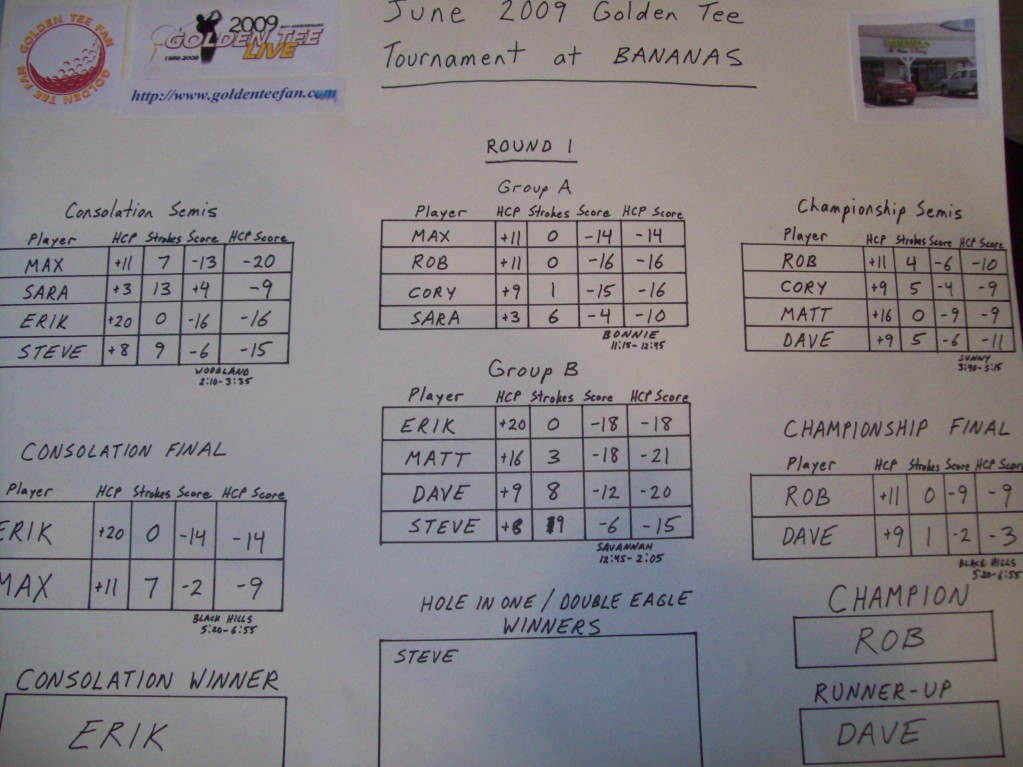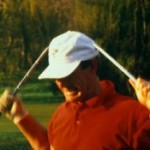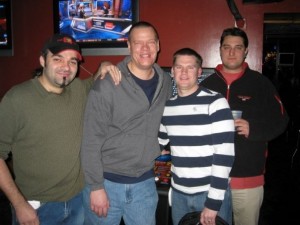As an amateur player, I’ve come across some more questions regarding the trackball and how its behavior affects your ball in certain circumstances. I’ve addressed some of these questions in this article so that all of us can come away with a better understanding of exactly why the crappy shot we just executed was so bad.
Now you know most of what there is to know about A1 and C3 shots, while also getting an inside look at the trackball! But, always wanting more, I had some additional questions in mind that I got answers from by the expert community!
Q: Do the sensors only read the pullback angle up until your golfer is at full backswing?
A: Yes. This means two things.
First, you don’t have to crank the ball backwards, although for most guys, that’s the easiest way to generate a pure pullback angle. If you want, you can pull back gently until your golfer is at full backswing. From that point on, pulling back any more has no effect.
Secondly, you can’t change your pullback angle if your golfer is already at full backswing. Instead, you have to “reset” your golfer by rotating left or right (for example), and then perform the pullback again.
Q: Sometimes, when you pull back part way, you can push forward slowly to decrease the backswing. What effect does this have on your final pullback angle for the shot?
A: This created some controversial discussion. Here are several takes on what happens:
1) A1 spinny with the club coming down: club is pulled back all the way to A, start spinning, the club starts coming down by itself, but with slow downswing speed. Ball doesn’t go very far because of the slow downswing.
5-wood pulled back all the way, then nudged down to halfway, then thumb at normal thumbage speed. Ball goes a lot farther than expected. Why? I think because you pulled all the way back to begin with.
2) It will start the shot from the stopped point. However it will have read the first part of the forward swing. Stopping the club will not reset this. You really shouldn’t push the club forward and stop it because knowing exactly what read it got off the little bit it was pushed is damn near impossible. So it will affect the angle but to know how is dependant on where it was pushed forward.
Q: Is there a “maximum velocity” at which you can hit the ball forward? Meaning, is there a speed at which distance maxes out? Can humans reach this speed?
A: Yes, yes, and yes. There didn’t used to be a known max on the RPMs, so there were some crazy ways to hit the trackball to get just a “little more” distance. They finally put a max (or restrictor) on it to keep people from killing themselves while playing and to level the playing field a bit.
Q: How are distance and angle affected if you pull back “past” A or C or shoot forward “past” 1 or 3? Does this decrease distance because of how the sensors are hit? Are the max angles at exactly A and 1?
A: There are angles past A, C, 1, and 3. The max cut will yield the max distance. Some people refer to the “past A, past 1” (and C3) as an overcut. Spinning the ball while you do that is the Spinner (Spinny). If you don’t use these shots at some point in a game, you’re probably not maximizing your potential score. There are also variations of these shots (an overcut A, but hitting between 1 & 2, for example) to get a different effect.
Sobe has a seemingly contradictory stance on this topic also:
“Don’t Overcompensate:
When you hit the trackball forward outside of 3 (towards ‘choose club’) the shot will actually cut inside as if it was hit closer to 2 1/2. No, the trackball isn’t broken – you just missed your line, my friend.”
Q: Does it matter if you pound down on the ball as opposed to a smooth, straight follow-through? It’s hard for me to shoot forward at 1 or 3 the same way I shoot forward at 2, so I usually pound down on it since I can’t follow through as well. So, I’m wondering how this is affecting my distance.
A: Pounding down on the ball will reduce distance. Here is more explanation:
Pounding down on the ball has a much different effect then a smooth hit. The biggest difference is the RPMs are going to be way off. I guess the best way to describe it is comparing the shot to a change up in baseball. You can swing your arm as hard as you want, but it will not spin the ball as fast.
I am also a firm believer that you have way more control over a smooth shot as compared to the beating that gets put on the balls. A smooth shot is much more consistant. You get into a mode where you know the “feel” of a shot. To achieve this you have to have a consistant motion. That cannot be achieved pounding down on the ball.
It also wears the balls out quicker when they are being hit down on.
However, within Sobe’s article, he has another take on this approach:
“Top players know that hitting down on the trackball is not the proper way to play Golden Tee. Hitting across the ball smoothly is the way to maximize performance. But hitting down on the trackball is the most important element of a successful C-3. It will take practice and a little patience but trust me; it really works. Some shots, especially softer ones, have a tendency to come off the clubface straight even though you hit out towards 3. This is caused by the movement of the trackball within its casing. So, by hitting down on the trackball you’ll help prevent this from occurring. Try it – you’ll notice the results right away.”
Q: How much can accuracy and distance be affected by a “dirty” trackball?
A: Depends on how dirty! Accuracy and distance can be affected by a dirty trackball, but it’s hard to say how much.


 Ever hit a shot and wonder what the heck just happened? Sure you have — we all go through that as we’re learning the mechanics of the trackball and the game itself, and I still ask the same question every now and then when a shot goes awry. The worst thing that can happen, though, is you shrugging it off and not stopping to figure out why that bad shot just happened! As you gain more experience, you’ll start to recognize the source of these problems, and then you can help your friends and yourself learn from these mistakes to become a better player.
Ever hit a shot and wonder what the heck just happened? Sure you have — we all go through that as we’re learning the mechanics of the trackball and the game itself, and I still ask the same question every now and then when a shot goes awry. The worst thing that can happen, though, is you shrugging it off and not stopping to figure out why that bad shot just happened! As you gain more experience, you’ll start to recognize the source of these problems, and then you can help your friends and yourself learn from these mistakes to become a better player. I arrived at Flounder’s bar in the Lincoln Park area of downtown Chicago around 6:00 Friday night, and it was already hopping with Golden Tee action! I think there were 11 GT machines set up in the back, including 8 pedestals with the big, wide screens and stand-alone console. Those things are AWESOME — it was the first I’d seen of them. They took a bit to get used to — you become accustomed to your hand hitting the screen on a follow-through, but instead you almost fall over if you forget about that! Also, putting took a bit to get used to because of the games it plays on the eyes, but before long you don’t want to play on anything else!
I arrived at Flounder’s bar in the Lincoln Park area of downtown Chicago around 6:00 Friday night, and it was already hopping with Golden Tee action! I think there were 11 GT machines set up in the back, including 8 pedestals with the big, wide screens and stand-alone console. Those things are AWESOME — it was the first I’d seen of them. They took a bit to get used to — you become accustomed to your hand hitting the screen on a follow-through, but instead you almost fall over if you forget about that! Also, putting took a bit to get used to because of the games it plays on the eyes, but before long you don’t want to play on anything else!


















